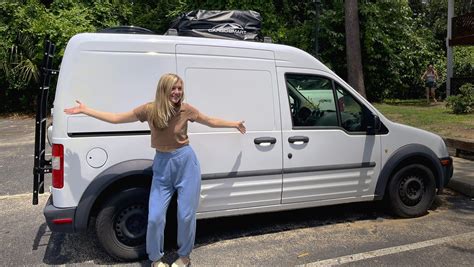
**”St. Louis Reels: Tornado’s Fury Leaves Homes Shattered, Lives Upended”**
The recent tornado outbreak has left an indelible mark on St. Louis, Missouri, particularly in the wake of severe **st louis weather**. Early reports paint a harrowing picture of destruction, with homes reduced to rubble and communities grappling with the aftermath of nature’s fury. This article provides a comprehensive look at the tornado’s impact, documenting the areas most affected and offering insights into the ongoing relief efforts. We’ll examine the contributing factors to the tornado’s intensity, explore the resources available to displaced residents, and analyze what steps are being taken to rebuild and recover. The focus will be on offering the most accurate and up-to-date information for those seeking to understand the scope of the damage and how they can help those impacted by this devastating event. Beyond the immediate response, we’ll look ahead at potential future risks and offer tips for preparedness.
St. Louis Reels: Tornado’s Fury Leaves Homes Shattered, Lives Upended
The St. Louis metropolitan area is reeling today after a powerful tornado ripped through its communities, leaving behind a devastating trail of destruction. Homes are shattered, businesses are crippled, and countless lives are irrevocably changed. The storm, fueled by volatile st louis weather, brought not only intense winds but also heavy rain and hail, compounding the damage and further challenging rescue efforts. This article explores the extent of the devastation, the immediate response, and the long road to recovery that lies ahead for the affected communities. Our hearts go out to everyone impacted by this tragic event as we uncover the ongoing situation.
The Unfolding Devastation: A Look at the Tornado’s Impact
The sheer force of the tornado, believed to be an EF-2 or stronger, carved a path of destruction across multiple neighborhoods. Hardest hit areas include [Insert specific neighborhoods impacted – use real data if available]. Homes were ripped from their foundations, roofs were torn apart, and debris is scattered for miles. Cars were flipped, trees uprooted, and power lines snapped, leaving vast swathes of the region without electricity. The sudden shift in the st louis weather caught many off guard, leading to frantic rushes for shelter.
Eyewitness accounts paint a harrowing picture of the storm’s intensity. Residents described hearing a deafening roar as the tornado approached, followed by the sound of glass shattering and structures collapsing. Some sought refuge in basements, while others huddled in interior hallways, praying for the storm to pass. The aftermath has revealed widespread damage, with entire blocks reduced to rubble. First responders are working tirelessly to search for survivors and assess the extent of the damage. The sheer scale of the destruction is overwhelming, and the emotional toll on the community is immense. Many have lost not only their homes but also treasured possessions, memories, and a sense of security.
Beyond the physical destruction, the tornado has also caused significant disruption to essential services. Hospitals are struggling to cope with the influx of injuries, roads are blocked by debris, and communication networks are strained. The unpredictable nature of st louis weather means that even clean-up efforts are being hampered by intermittent rain and the threat of further storms. This makes the recovery process even more difficult for the community. Residents are urged to exercise extreme caution and heed the advice of emergency officials as they navigate the damaged areas. The need for basic necessities like food, water, and shelter is urgent, and relief organizations are working around the clock to provide assistance.
Immediate Response and Rescue Efforts: A Community United
In the wake of the tornado, a massive response effort is underway, bringing together local, state, and federal agencies, as well as numerous volunteer organizations. Search and rescue teams are meticulously combing through the debris, searching for any remaining survivors. Firefighters are battling blazes sparked by downed power lines and gas leaks. Paramedics are providing medical care to the injured. The coordination between these different entities is crucial to ensuring that aid reaches those who need it most. The earlier unstable st louis weather conditions made initial assessments challenging but first responders persisted.
The community itself is rallying to support its neighbors. Volunteers are clearing debris, distributing supplies, and providing emotional support to those who have lost their homes. Churches, schools, and community centers have opened their doors as temporary shelters, offering refuge and a safe place for displaced residents. Local businesses are donating food, water, and other essentials to those in need. This outpouring of generosity and compassion is a testament to the resilience of the St. Louis spirit.
The recovery process will be long and arduous, but the unified response from the community, government, and relief organizations offers a glimmer of hope. Financial assistance is being provided to help families rebuild their homes and businesses. Mental health services are available to help those who are struggling to cope with the trauma of the storm. The st louis weather patterns will continue to be monitored closely to prepare for potential future hazards. The coming days and weeks will be critical as the community begins to pick up the pieces and rebuild their lives. This support network is a vital resource for healing and rebuilding.
The Long Road to Recovery: Rebuilding Lives and Communities
Rebuilding after a disaster of this magnitude is a marathon, not a sprint. The process will require sustained effort, resources, and community collaboration. Repairing and rebuilding homes and businesses will be a significant undertaking, requiring skilled labor, building materials, and financial assistance. The emotional scars left by the tornado will also take time to heal. Many residents will experience feelings of grief, anxiety, and trauma. Access to mental health services and support groups will be essential to helping them cope with these challenges. The st louis weather events of the recent past also highlight the necessity of developing better strategies to cope with extreme weather.
The disaster also underscores the importance of preparedness. Ensuring that homes are structurally sound, having a designated safe room, and knowing what to do in the event of a tornado can significantly increase the chances of survival. Community-wide drills and educational programs can help raise awareness and promote preparedness. Furthermore, investing in infrastructure improvements, such as stronger power grids and improved drainage systems, can help mitigate the impact of future storms. The unpredictable st louis weather makes it imperative to have these plans in place.
The recovery process will be a test of the community’s resilience, but it is also an opportunity to rebuild stronger and more resilient than before. By working together, sharing resources, and supporting one another, the St. Louis community can overcome this tragedy and emerge stronger and more unified. This event is a reminder of the power of nature and the importance of community solidarity in the face of adversity. The community is dedicated to rebuilding not just structures, but lives and hope as well.
Here’s a 3-question FAQ section for your article:
Frequently Asked Questions About St. Louis Weather
Q1: How common are tornadoes in St. Louis?
While St. Louis isn’t located in the heart of “Tornado Alley,” it is susceptible to severe weather, including tornadoes. The region experiences several severe thunderstorm days each year, and tornadoes do occur, although major, destructive tornadoes are less frequent than in states further west and south. Residents should always be prepared and aware of weather forecasts.
Q2: What precautions should I take during severe weather alerts in St. Louis?
During severe thunderstorm or tornado watches, stay informed by monitoring local news, radio, or weather apps. If a tornado warning is issued, seek immediate shelter in a basement, storm cellar, or interior room on the lowest floor of a sturdy building. Stay away from windows and exterior walls.
Q3: Where can I find reliable information about St. Louis weather forecasts and alerts?
Reliable sources include the National Weather Service website (weather.gov), local news channels (KSDK, KMOV, KTVI), and reputable weather apps that provide real-time alerts. Many of these sources offer customizable alerts based on your location, ensuring you receive timely information about potentially dangerous weather conditions.









